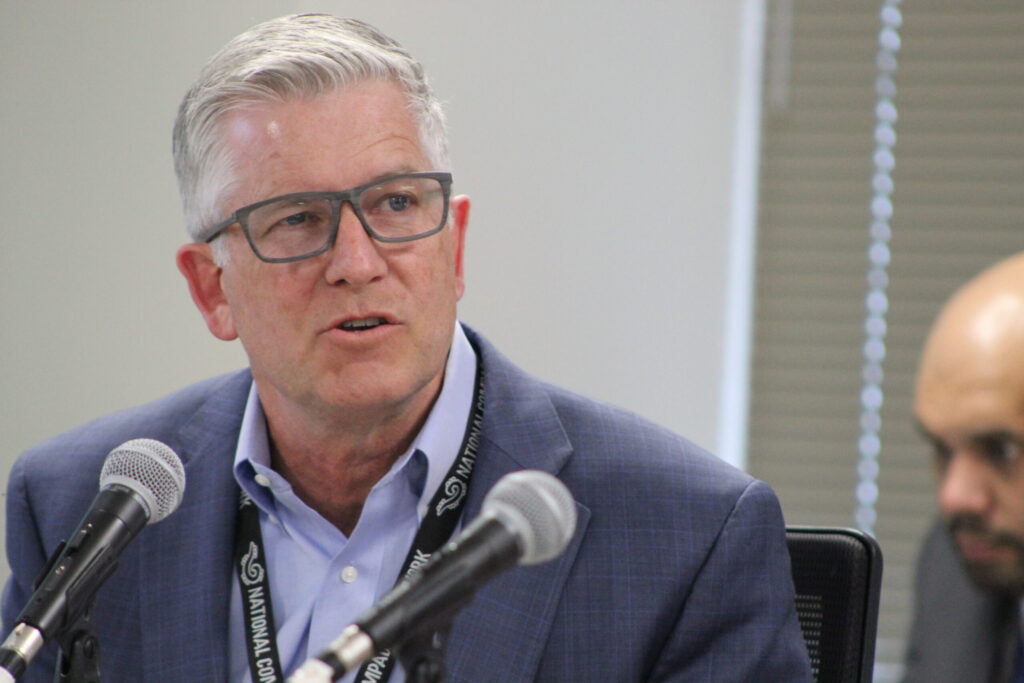Latest state Dem hospital cost reform skips Econ 101 | HUDSON
We’re all familiar with the adage “close” only counts in horseshoes. A legislative corollary is “intentions are largely irrelevant — only results count.” A case in point would be the seven-year effort to “save Coloradans money on health care.” I never expected to write so many columns regarding the failures of this campaign. Despite heroic exertions on the part of Gov. Jared Polis and dozens of bills introduced in the legislature, Colorado premiums for medical insurance have continued to climb, exceeding the goals adopted by statute. We are not appreciably better off today than our contemporaries across the nation. If there’s a secret key to unlocking the rate of inflation for health care spending, it remains to be discovered.
Four well-intentioned Democrats have responded this year with House Bill 25-1174, which proposes to establish a schedule of caps on hospital charges. This certainly appears an attractive target since hospital prices have soared by 250%, twice the rate of other medical costs, since the year 2000. Surely, there must be opportunity for savings. Unfortunately, the legislative sponsors seem to have skipped Economics 101. Just as rent controls reduce the number of available apartments, something Argentina has discovered following President Javier Milei’s repeal of controls, suddenly 40% more units appeared on the market while average rents declined. Perhaps, we should pause and consider what the consequences from arbitrarily imposed hospital reimbursement limits might be.
The summary provided by legislative staff explains, “The bill prohibits a provider that is subject to the reimbursement limitations from billing or collecting payment from a person covered under a state benefit plan or small group plan for any outstanding balance for covered services that is not reimbursed by the carrier, except for the applicable in-network coinsurance, copayment or deductible amounts.” Isn’t that both interesting and a bit opaque, especially the fact the list of protected classes commences with state employees? After a little more digging, you can discover buried in the bill’s fiscal note these caps are expected to reduce state government health care expense by $68 million in fiscal year 2026-27. That must look like found treasure to a Joint Budget Committee (JBC) struggling to balance its books.
Capitol rumor is predicting the JBC will be unable to deliver its Long Bill on time this week. What originally appeared to be an $800 million shortfall in January continues to balloon, driven, in part, by DOGE “clawbacks” of federal revenues scheduled from Washington. The Colorado state budget hole is now nearly $1.5 billion and growing. A nearly $70 million savings on health care costs is more than a drop in the bucket the JBC needs to fill. Consequently, there will be substantial momentum to approve HB-1174. Yet there are reasons to question whether it will actually function as intended. Allegedly modeled after a similar piece of legislation adopted in 2017 by Oregon, there have been unanticipated negative consequences.
Stay up to speed: Sign up for daily opinion in your inbox Monday-Friday
Hospitals, including numerous rural clinics, have closed there. The largest was the sole hospital in Eugene, a city of 175,000 that served a broad swath of coastal towns now four hours from any full-service medical facility. Jonathan Cohee, chief executive of Delta Health in Montrose, reports to legislators 60% of Oregon’s remaining hospitals are operating in the red and in real danger of insolvency. Quoting from Cohee’s letter, “…despite serving a heavily rural patient population — the reimbursement cuts under this bill (1174) would make it even harder for Delta Health to maintain (its) critical services.” Once again, a predominantly Front Range General Assembly is trying to punish financially strong urban hospitals while ignoring the very real challenges across rural Colorado and its “large number of undocumented immigrants, Native Americans and patients with disabilities,” Cohee notes.
Toss in a looming threat of severe Medicaid cuts and it’s unlikely there will be any real cost savings for Colorado, whatever the JBC’s accounting might show. By way of example, the nearly $70 million dollar avoided expense forecast in the bill’s fiscal note translates into an equal revenue loss for hospitals, or approximately 700 nursing positions. That will result in staff stretched thin and a decline in the quality of patient care. This is the reason why several nurses’ unions in Oregon are now supporting repeal of their rate setting regimen. The Economist summarizes our cost challenge with, “Who is to blame for America’s enormous health care costs? The sector accounts for almost a fifth of the country’s GDP, twice the average for wealthy countries, yet outcomes are no better.”
They go on, observing, “Luigi Mangione, whose trial for the alleged murder of the chief executive of United Healthcare, America’s biggest health insurer … has received (legal) donations totaling $740,000.” A donor posted, “He did what everyone else is just thinking.” Let’s hope not. The Colorado legislature should engage in some thinking of its own. There have been a sequence of viral pricing remedies proposed with little affect: fee transparency, reinsurance, the “Colorado plan” and now, reimbursement capping. Most of these strategies are premised on the notion health care costs will bend to competitive market pressures. This premise is flawed. When ill, we don ‘t seek out the low cost provider, but the closest. When injured, we search for the surgeon with the best record for success at medical repairs. And, it’s always smart to get a second opinion.
Miller Hudson is a public affairs consultant and a former Colorado legislator.











